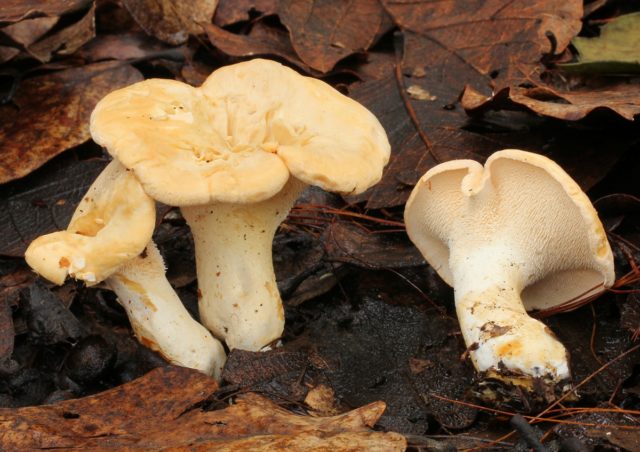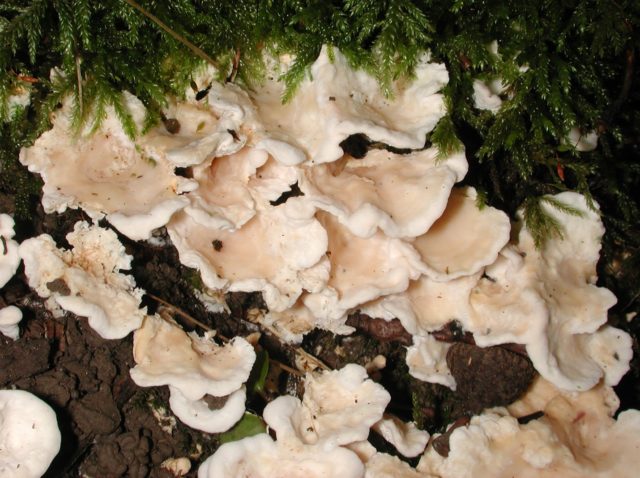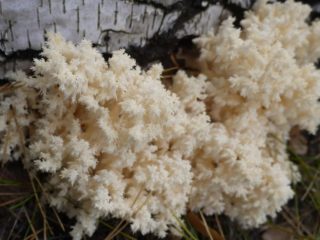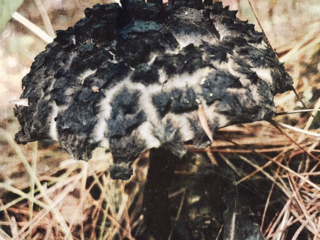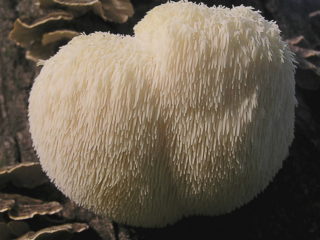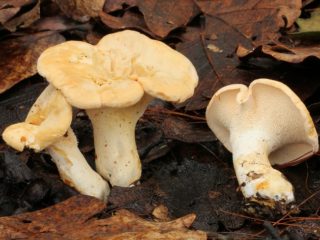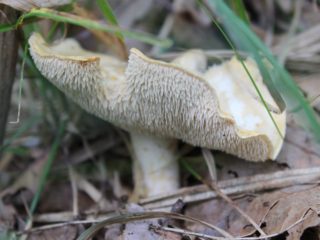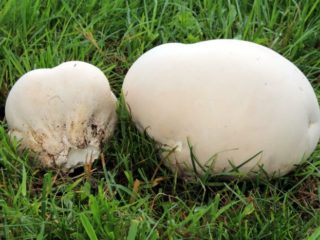Content
Reddish-yellow hedgehog (Hydnum repandum) is a member of the Hedgehog family, genus Hydnum. It is also known as reddish hedgehog. Below is information about this mushroom: description of appearance, habitat, distinctive features from its counterparts, edibility and much more.
Description of the reddish-yellow hedgehog
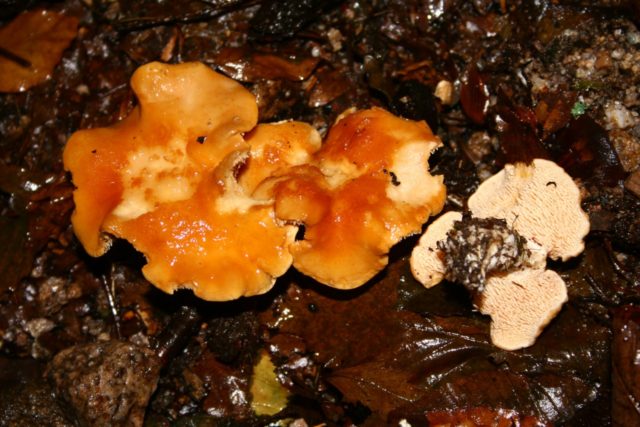
Is a wild species
This specimen is a fruiting body with a reddish-reddish cap and a cylindrical stem. The pulp is fragile and hardens with age, especially the stem. Cream or white spore powder.
Description of the cap
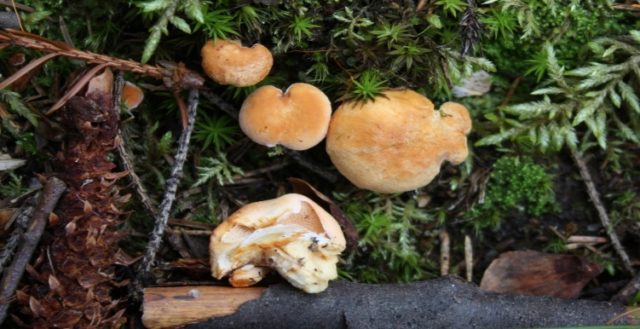
In dry weather, the mushroom cap fades and takes on a pale yellow tone.
At a young age, the cap of the hedgehog is reddish-yellow, convex in shape with downward curved edges; in the future it becomes almost flat with a depressed center. The surface is velvety to the touch, at the initial stage of ripening it is colored orange with a nutty or reddish tint, in maturity it fades and becomes light yellow or ocher. As a rule, the cap has an uneven shape, this is especially noticeable in adult fruits. When pressed, the surface of the cap darkens. On the inner side there are thin, descending, easily broken off small spines, the size of which reaches 8 mm. They are painted white or yellowish.
Description of the leg
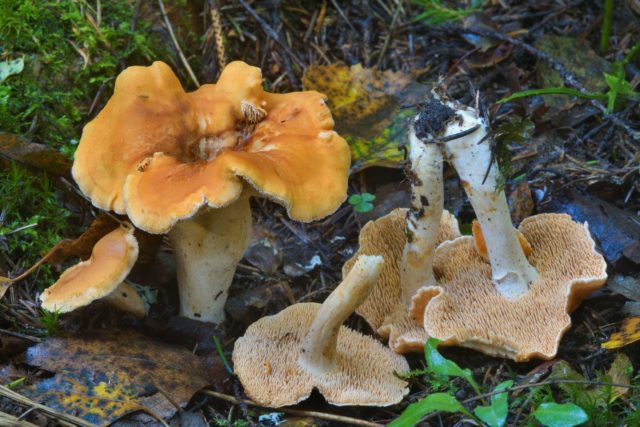
The leg of this specimen is weakly attached to the ground
The leg of the reddish-yellow hedgehog is cylindrical, straight or slightly curved, the height of which varies from 3 to 8 cm, and the thickness is up to 2.5 cm in diameter. The structure is fibrous, dense, continuous, rarely with caverns. The surface is smooth, there is a felt fluff at the base. Colored in light yellow shades, darkens with age.
Doubles and their differences
Many representatives of the Hedgehog family are similar in appearance to chanterelles. However, a distinctive feature is the presence of needles, which are not characteristic of the latter species. In addition, the following species are considered to be twins of the reddish-yellow hedgehog:
- Yellow hedgehog – belongs to the category of edible mushrooms.The cap is irregularly shaped, lumpy, dense, 3-12 cm in diameter. At the initial stage of development, it is slightly convex with curved edges downwards, then it becomes flat with a depressed center. Quite often it grows together with its relatives living in the neighborhood. The color of the cap varies from pale ocher to reddish-orange, becoming lighter shades in dry weather. When pressed, it begins to darken.
The pulp is brittle, yellow or white in color, and becomes bitter with age. It prefers a temperate climate for germination and is found in North America, Siberia and the Far East. They differ from the reddish-yellow hedgehog in their larger and more massive caps and short legs. It is also worth paying attention to the structure of the hymenophore, since the double’s needles descend quite low to the stalk.
- Systotrema confluent - a rare species, and therefore its edibility is unknown. Similar to the hedgehog in the reddish-yellow color of the fruiting bodies, the texture of the pulp, and also in its mass growth. However, a distinctive feature is that the doubles are inferior in size, since the cap in diameter reaches no more than 3 cm, and the leg is up to 2 cm in height. In addition, the hymenophore is also different: in the sistotrema merging at a young age, it is an unexpressed mesh-porous relief, and over time acquires spines with jagged edges.
Where and how does the red-yellow hedgehog grow?
The reddish-yellow hedgehog grows mainly in mixed forests and forms mycorrhiza with coniferous and deciduous trees. In most cases, it grows in small groups, sometimes fused with caps with its relatives. Settles on the ground, in short grass or among moss.In Russian forests, the reddish-yellow hedgehog is quite rare; it is most common in the Northern Hemisphere. The optimal time for growth is from June to October.
Is the red-yellow hedgehog mushroom edible or not?
The reddish-yellow hedgehog belongs to the category of conditionally edible mushrooms. It is eaten exclusively at a young age, since overripe specimens are very bitter and taste like a rubber stopper. This type is used for frying, boiling, and is also suitable as preparation for the winter, so it can be pickled, dried and frozen.
How to cook red-yellow blackberry mushrooms
From these gifts of the forest you can prepare various dishes: soups, side dishes, salads, sauces. They are especially popular fried with onions and sour cream. Due to the fleshy pulp and dense structure, during heat treatment, mushrooms almost do not decrease in size, which is undoubtedly an advantage. However, before preparing a particular dish, it is necessary to process the gifts of the forest. To do this you should:
- Clean the collected mushrooms from forest debris. For severe stains, you can use a toothbrush or a small cloth.
- Remove all spines.
- Rinse under running water.
- Boil the reddish-yellow blackberries for at least 30 minutes, skimming off the foam.
Only after the above steps can the reddish-yellow blackberry be used in cooking.
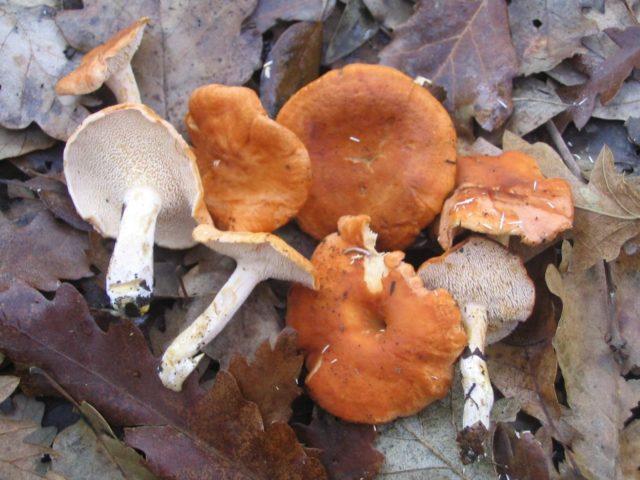
The taste of these mushrooms has a pleasant sourness
Beneficial properties of reddish hedgehog
Thanks to the beneficial substances that make up the reddish mange, this specimen is used in folk and traditional medicine. Thus, ointments based on it help eliminate various skin diseases, and mushroom pulp is excellent as a mask for moisturizing the skin. In addition, this species has the following medicinal properties:
- has a positive effect on the nervous system;
- promotes rapid blood renewal;
- has regenerating properties;
- improves the functioning of the gastrointestinal tract;
- has an antibacterial effect;
- has a beneficial effect on the condition of nails, hair and skin;
- strengthens the immune system.
Thus, regular use of these mushrooms has a positive effect on the condition of the entire body.
Conclusion
The reddish-yellow hedgehog is not the most popular mushroom, and therefore many sources classify it as little-known. In addition, some reference books classify this species as a conditionally edible mushroom, while others classify it as edible. However, expert opinion agrees that this specimen does not contain toxic substances. As practice shows, reddish-yellow hedgehog can be eaten, but only after preliminary heat treatment. Also, when collecting mushrooms, it is worth remembering that only young specimens are suitable for preparing various dishes, since overripe gifts of the forest have a bitter taste.
